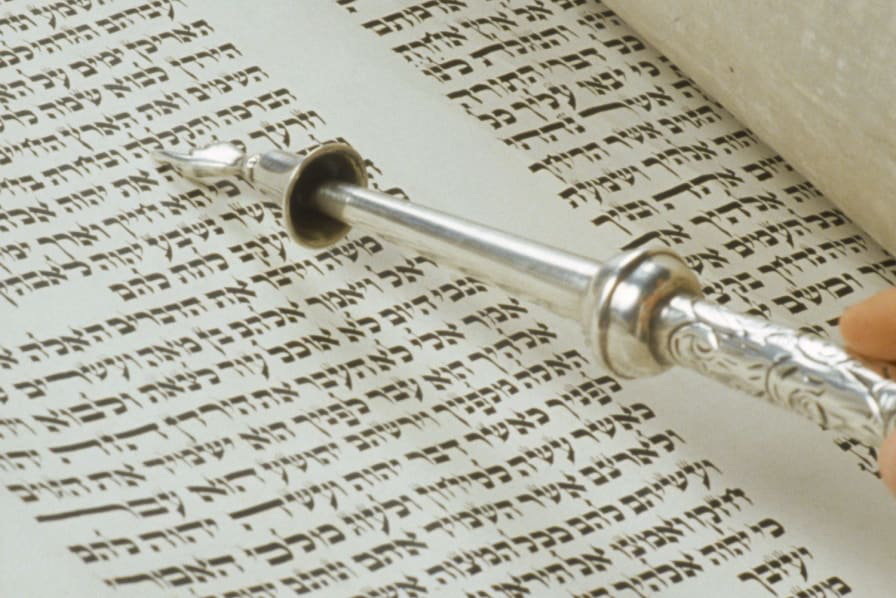(1) The Eternal spoke to Moses and Aaron, saying: (2) The Israelites shall camp each with his standard, under the banners of their ancestral house; they shall camp around the Tent of Meeting at a distance. (3) Camped on the front, or east side: the standard of the division of Judah, troop by troop. Chieftain of the Judites: Nachshon son of Amminadav. (4) His troop, as enrolled: 74,600. (5) Camping next to it: The tribe of Issachar. Chieftain of the Issacharites: Netanel son of Tzuar. (6) His troop, as enrolled: 54,400. (7) The tribe of Zebulun. Chieftain of the Zebulunites: Eliav son of Chelon. (8) His troop, as enrolled: 57,400. (9) The total enrolled in the division of Judah: 186,400, for all troops. These shall march first. (10) On the south: the standard of the division of Reuben, troop by troop. Chieftain of the Reubenites: Elitzur son of Shedeur. (11) His troop, as enrolled: 46,500. (12) Camping next to it: The tribe of Simeon. Chieftain of the Simeonites: Shelumiel son of Tzurishaddai. (13) His troop, as enrolled: 59,300. (14) And the tribe of Gad. Chieftain of the Gadites: Eliasaph son of Reuel. (15) His troop, as enrolled: 45,650. (16) The total enrolled in the division of Reuben: 151,450, for all troops. These shall march second. (17) Then, midway between the divisions, the Tent of Meeting, the division of the Levites, shall move. As they camp, so they shall march, each in position, by their standards.
(7) Now Moses would take the Tent and pitch it outside the camp, at some distance from the camp. It was called the Tent of Meeting, and whoever sought the Eternal would go out to the Tent of Meeting that was outside the camp. (8) Whenever Moses went out to the Tent, all the people would rise and stand, each at the entrance of his tent, and gaze after Moses until he had entered the Tent. (9) And when Moses entered the Tent, the pillar of cloud would descend and stand at the entrance of the Tent, while God spoke with Moses. (10) When all the people saw the pillar of cloud poised at the entrance of the Tent, all the people would rise and bow low, each at the entrance of his tent. (11) The Eternal would speak to Moses face to face, as one person speaks to another. And he would then return to the camp; but his attendant, Joshua son of Nun, a youth, would not stir out of the Tent.
(ב) ושב אל המחנה. לְאַחַר שֶׁנִּדְבַּר עִמּוֹ הָיָה מֹשֶׁה שָׁב אֶל הַמַּחֲנֶה וּמְלַמֵּד לַזְּקֵנִים מַה שֶּׁלָּמַד; וְהַדָּבָר הַזֶּה נָהַג מֹשֶׁה מִיּוֹם הַכִּפּוּרִים עַד שֶׁהוּקַם הַמִּשְׁכָּן, וְלֹא יוֹתֵר,...
(2) ושב אל המחנה . AND HE RETURNED INTO THE CAMP — After God had conversed with him, Moses used to return to the camp and teach the elders what he had learned. This Moses practised from the day of Atonement until the Tabernacle was set up, but no longer...
“ושמרו את משמרת אהל מועד לכל עבודת האהל” – אמר ר’ שמעון הא למדנו שהן שני אהלות אהל העבודות ואהל הדברות
Sifrei Zuta - Numbers 18:4
And discharge the duties of the Tent of Meeting, all the service of the Tent” – Rabbi Shimon said: “We learn from this (=the double reference to “tent” in the verse) that there were two tents, the tent of service and the tent of speaking .
The most compelling solution to the Ohel mo'ed problem comes from the Documentary Hypothesis: the Tent of Meeting Tabernacle typifies P, while Moses’ Tent of Meeting is from E. (J and D have no comparable structure.)
P’s Ohel Moed Tabernacle is the elaborate structure situated in the middle of the camp into which no Israelite may enter. E’s Ohel Moed is the simple tent outside the camp into which any Israelite wishing to communicate with God may enter. The differences between these two tents are even more profound, reflecting vastly different theologies.
Does God Dwell with the Israelites?
According to the Priestly texts, Yhwh wishes to dwell among the Israelites, which is why he commands them to build a home for him...
In contrast, the Ohel Moed text in Exodus 33 has Moses placing the Ohel Moed outside the camp because Yhwh tells him that He cannot and will not dwell among the Israelites, since His temper threatens to destroy them if they are proximate...
This prompts Moses to place the Ohel Moed outside the camp; it allows God to come down and speak without the risk of God actually being inside the camp, seeing problematic Israelite behavior, and lashing out.
In the middle of it all, stands the Ohel Moed. The clans arranged themselves in orderly fashion so that all turned in to face the sacred place that assured them of God’s presence (2:2). Aaron and his offspring are bound by extensive rituals, and the Levites provide a ring of protection from contamination (1:48-54). Whatever danger or chaos might await them, here was a place where activity was highly regulated.
In our own mental and physical maps, there is often one place of order that anchors a larger, muddier, more chaotic world. We all have it—a drawer, a shelf, a space we like to keep in perfect order. I finally organized a small bookshelf in my bedroom, putting papers in order and clearing off the top. I find it pleasing and restful to look over at it and see the top completely clear, and I have become quite obsessive about not putting things on top of it. It says life is not completely out of control.



